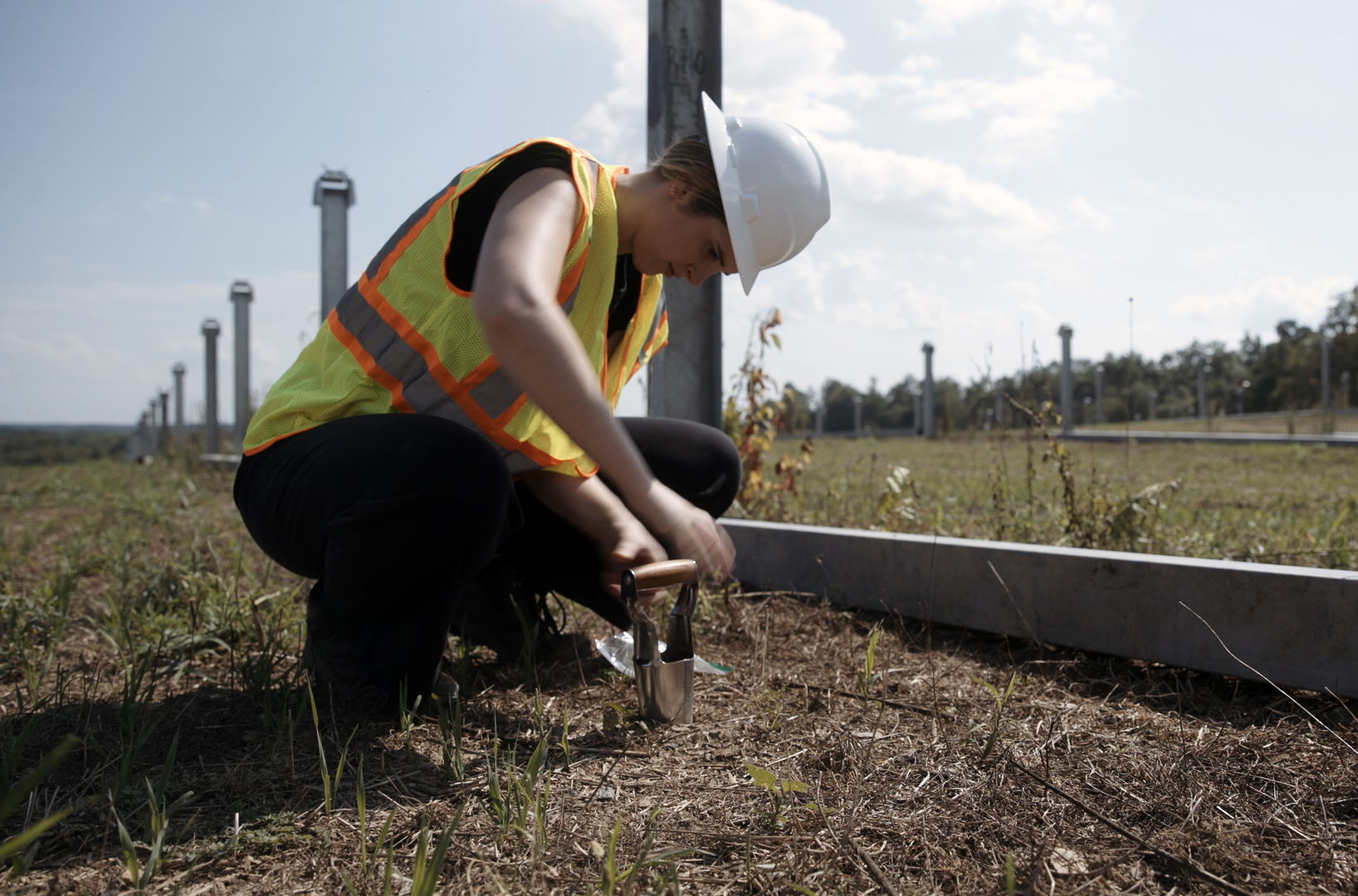Solar fields are designed to channel one of our planet’s resources—sunlight—into energy. But these arrays sit atop yet another valuable resource: soil. Over the last year, Penn master’s student in earth and environmental studies Hannah Winn has been posing the question, what happens to soil health following construction of a solar array?
The question is timely, as Penn is on the cusp of a new energy era. Starting this year, solar energy from a solar project in central Pennsylvania will meet roughly 70% of the University’s electrical demand, enabling the University to move a solid step closer to its goal of carbon neutrality by 2042. As part of the project, energy company AES, which developed the project, is supporting renewable energy research at Penn.
“It’s been super eye-opening to go to the solar farms,” Winn says. “In school everything is pretty theoretical, so to actually stand there in the solar facility and learn about the logistics involved, see how many people are involved in a long-term project like this, has been personally very impactful.”
Winn’s project emerged from this partnership. Her adviser, Alain Plante of the Department of Earth and Environmental Science in Penn’s School of Arts & Sciences, developed a proposal for the research in collaboration with AES’ Sustainability and Impact team.
“Any land use involves a tradeoff,” says Plante. “Some renewable energy installations may be going into areas where we’re giving up good land for food production. Here, AES was interested in knowing, in addition to the installation itself, whether the soil beneath these panels could be sequestering carbon, offering a potential co-benefit to the solar energy production.”
Read more at Environmental Innovations Initiative.








